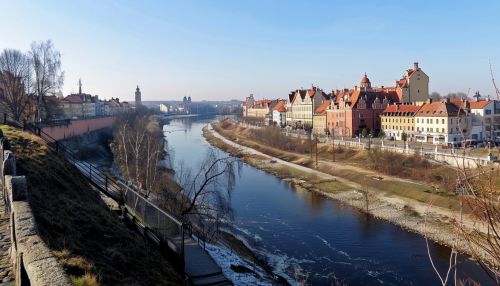Legnica
History
Legnica, a city in southwestern Poland, has a rich and complex history that dates back to the early Middle Ages. The first recorded mention of Legnica, then known as Lignica, appears in the 12th century. The city's strategic location on the Kaczawa River made it a significant settlement in the region. During the 13th century, Legnica became the capital of the Duchy of Legnica, a subdivision of the fragmented Kingdom of Poland. The city played a crucial role in the Battle of Legnica in 1241, where the Mongol forces defeated the combined European armies.
Medieval Period
Throughout the medieval period, Legnica developed as a center of trade and commerce. The city's fortifications were strengthened, and it became a hub for artisans and merchants. The construction of the Legnica Castle in the 13th century marked a significant development in the city's architectural landscape. The castle served as the residence of the Piast dynasty, who ruled the Duchy of Legnica for several centuries.
Renaissance and Baroque Periods
The Renaissance and Baroque periods saw further growth and development in Legnica. The city became known for its cultural and intellectual contributions. The establishment of the Legnica Academy in the 17th century was a testament to the city's commitment to education and scholarship. The academy attracted scholars and students from across Europe, contributing to the city's intellectual vibrancy.
Modern Era
In the 19th century, Legnica underwent significant industrialization, becoming an important center for manufacturing and industry. The city's infrastructure expanded, with the construction of railways and modern facilities. During World War II, Legnica was occupied by Nazi Germany and suffered considerable damage. After the war, the city was incorporated into Poland, and extensive efforts were made to rebuild and modernize it.
Geography
Legnica is located in the Lower Silesian Voivodeship, in southwestern Poland. The city lies on the banks of the Kaczawa River, a tributary of the Oder River. The region is characterized by its diverse landscape, which includes forests, rivers, and rolling hills. The city's geographical location has made it a significant transportation hub, with major roads and railways connecting it to other parts of Poland and Europe.


Economy
The economy of Legnica has evolved significantly over the centuries. Historically, the city was known for its trade and commerce, with a strong presence of artisans and merchants. In the modern era, Legnica has become an important industrial center, with a focus on manufacturing and production. Key industries in the city include metallurgy, machinery, and electronics. The Legnica Special Economic Zone (LSEZ) has attracted numerous domestic and international investors, contributing to the city's economic growth.
Demographics
As of the latest census, Legnica has a population of approximately 100,000 residents. The city is characterized by its diverse demographic composition, with a mix of different ethnic and cultural groups. The majority of the population is of Polish descent, with significant communities of Germans, Ukrainians, and other ethnic minorities. The city's demographic profile has been shaped by historical events, including migrations and population movements.
Education
Legnica has a well-developed education system, with numerous primary, secondary, and higher education institutions. The Legnica University of Technology is one of the city's most prominent educational institutions, offering a wide range of programs in engineering, technology, and applied sciences. The city also has several vocational schools and training centers, providing education and skills development for the local workforce.
Culture
Legnica is known for its rich cultural heritage and vibrant arts scene. The city hosts numerous cultural events and festivals throughout the year, including the Legnica Cantat, an international choral competition. The Legnica Theatre is a major cultural institution, offering a diverse program of theatrical performances, concerts, and other cultural events. The city's museums and galleries, such as the Legnica Copper Museum, showcase the region's history and artistic achievements.
Architecture
The architectural landscape of Legnica is a testament to its rich history and cultural heritage. The city boasts a mix of Gothic, Renaissance, Baroque, and modern architectural styles. Notable landmarks include the St. Peter and Paul Cathedral, a stunning example of Gothic architecture, and the Piast Castle, which reflects the city's medieval heritage. The city's historic center is characterized by its well-preserved buildings and charming streets, offering a glimpse into Legnica's past.
Transportation
Legnica is well-connected by a comprehensive transportation network. The city is served by major highways and railways, providing easy access to other parts of Poland and Europe. The Legnica Railway Station is a key transportation hub, offering regular train services to major cities such as Wrocław, Warsaw, and Berlin. The city's public transportation system includes buses and trams, ensuring convenient mobility for residents and visitors.
Notable People
Legnica has been home to many notable individuals who have made significant contributions in various fields. Some of the prominent figures associated with the city include:
- Henry II the Pious, Duke of Legnica and a key figure in the Battle of Legnica.
- Friedrich von Logau, a renowned German poet and epigrammatist.
- Jerzy Grotowski, an influential theatre director and innovator in experimental theatre.
See Also
- Lower Silesian Voivodeship
- Battle of Legnica
- Legnica Copper Museum
- Legnica University of Technology
- St. Peter and Paul Cathedral
